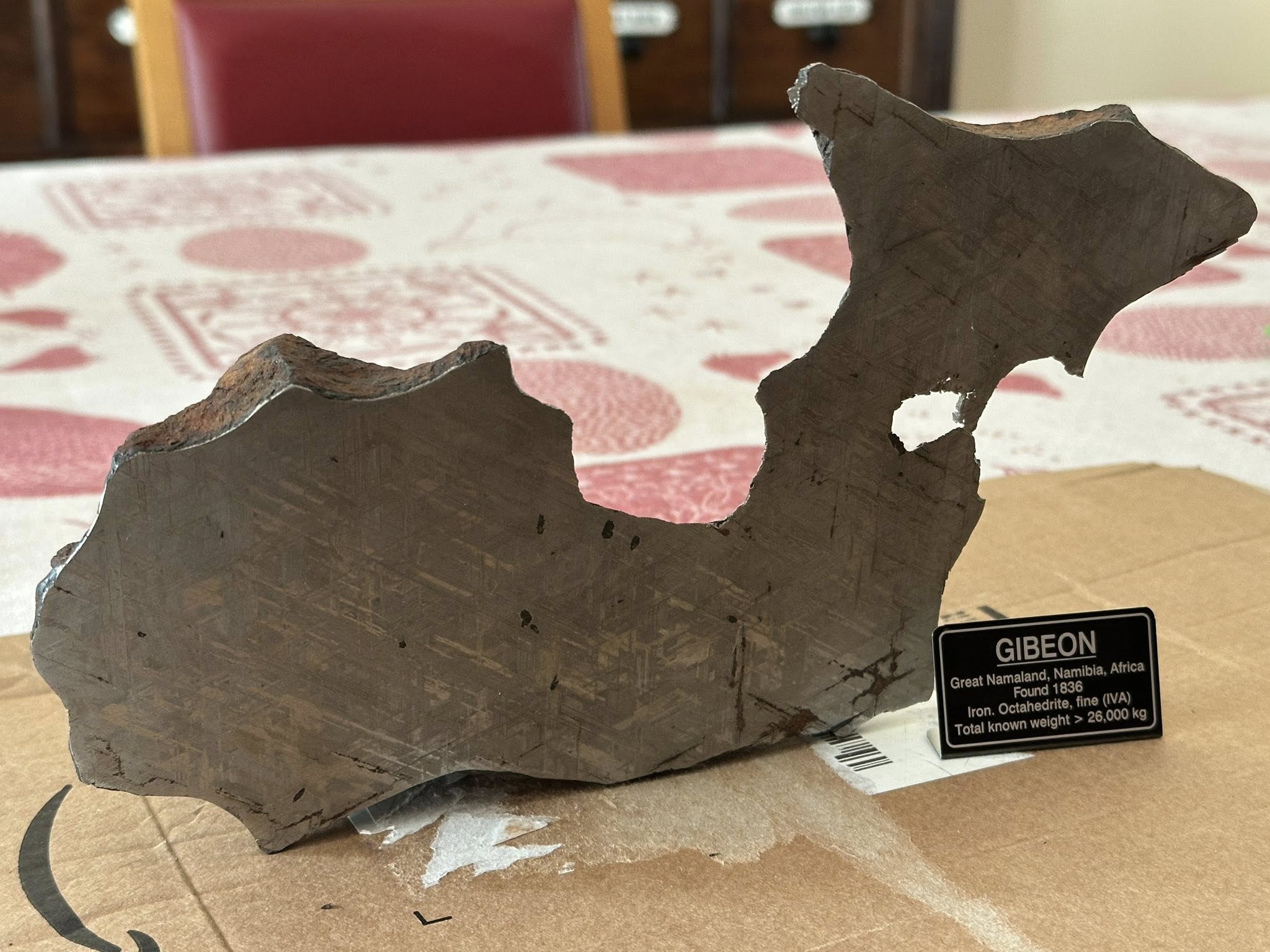
🔭 Gibeon Meteorite: Namibia’s Cosmic Iron Treasure
In the heart of Namibia’s Kalahari Desert lies one of Earth’s most iconic pieces of cosmic history — the Gibeon meteorite. Known for its stunning crystalline patterns and impressive provenance, this iron meteorite has captured the imagination of scientists, collectors, and designers alike.
🌌 Ancient Origins & Discovery
The Gibeon meteorite belongs to the IVA group of fine octahedrite iron meteorites, remnants of a shattered asteroid core that formed more than 4.5 billion years ago (Wikipedia, Christie’s). Indigenous Nama peoples discovered and used these fragments long before Western records, fashioning them into tools and spearheads. European interest began in 1836 when Captain J.E. Alexander sent samples to Sir John Herschel, who confirmed their extraterrestrial origin (Wikipedia).
Between 1911 and 1913, dozens of large fragments (some weighing hundreds of kilograms) were gathered and later installed as a public fountain display in Windhoek’s Post Street Mall — today declared a protected National Monument (Wikipedia).
🧬 Composition & Spectacular Structure
Gibeon is primarily composed of:
- 91.8% iron
- 7.7% nickel
- Trace cobalt, phosphorus, gallium, germanium, and iridium (Wikipedia)
The meteorite’s most captivating feature is its Widmanstätten pattern — a mesmerizing lattice of nickel-iron crystals revealed upon cutting and acid-etching (Wikipedia). These interwoven kamacite and taenite bands reflect incredibly slow cooling in space, over millions of years — a process impossible to replicate on Earth (Spirit Rock Shop).
🌍 Strewn Field & Preservation
The Gibeon fragments are scattered across a massive strewn field, nearly 390 km long and 120 km wide — one of the largest known plots on Earth (Wikipedia). Estimates suggest a total recovered mass of around 26 tonnes (LPI). Since 2004, as part of Namibia’s National Heritage legislation, all Gibeon meteorites have been protected — essentially banning their removal or sale (meteorite-recon.com).
🎨 Cultural Impact & Collectibility
From museum exhibits to haute horlogerie, Gibeon has found its way into both public spaces and private collections. The Windhoek fountain continues to draw visitors fascinated by its rugged beauty (African Heritage, Atlas Obscura). In recent decades, Gibeon slices have been crafted into luxury watch dials, polished specimens, and fine jewelry pieces, celebrated for both their aesthetic allure and scientific significance (photomacrography.net).
📈 Market & Value Insights
Before the export ban, Gibeon fragments were available in meteorite markets worldwide. Prices have escalated dramatically — from as low as ~$50/kg in the 1970s to upwards of $800/kg for high-quality etched pieces today (meteorite-recon.com). Today, most traded specimens trace origin back to pre-ban exports (e.g., via South Africa) (meteorite-recon.com).
🧩 Why Gibeon Matters
- Scientific Significance: As a fine octahedrite, it offers insights into asteroid core cooling and early solar system processes.
- Artistic Beauty: Its Widmanstätten patterns make it a timeless aesthetic treasure.
- Cultural Heritage: Once readily used by local peoples and now protected by law, it symbolizes both ancient tradition and modern conservation.
🔗 Learn More
- Wikipedia: A comprehensive overview of the meteorite’s classification, history, and distribution.
- Meteoritical Bulletin (LPI/USRA): Scientific details and official classification entry.
- Meteorite‑Recon documentary: A deeper dive into Gibeon’s history and legacy.
- Atlas Obscura: A visitor’s guide to the iconic Windhoek meteorite fountain.
✨ Final Thoughts
The Gibeon meteorite bridges deep time and modern admiration — from cosmic origins to living heritage. Its strength lies not just in mineral content, but in its ability to connect science, culture, and craftsmanship. Whether viewed in person at Windhoek’s central plaza or held in private collections, it remains one of Earth’s most extraordinary gifts from space.
